Joseph
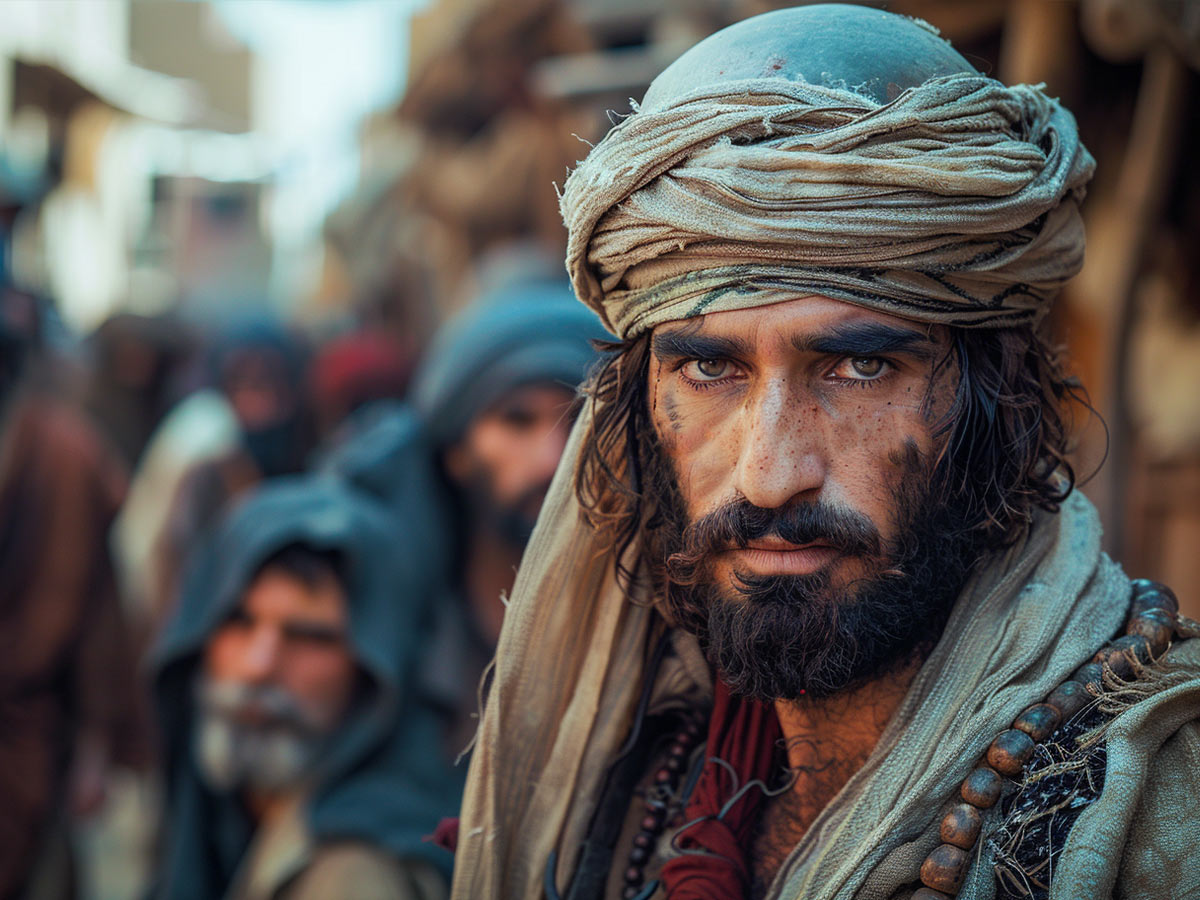
In the New Testament, while God is considered to be Jesus' true father, Joseph, the husband of Mary, is still considered to be his earthly father. We actually don't get a lot of stories about Joseph in the Bible, aside from the one where he is understandably confused after an angel tells him that his wife is pregnant and the baby isn't his.
There aren't a ton of artistic traditions regarding Joseph, so this guy that the AI program generated may as well be him. He looks like the kind of guy that could handle a tough situation. Good for Mary.
Sariel
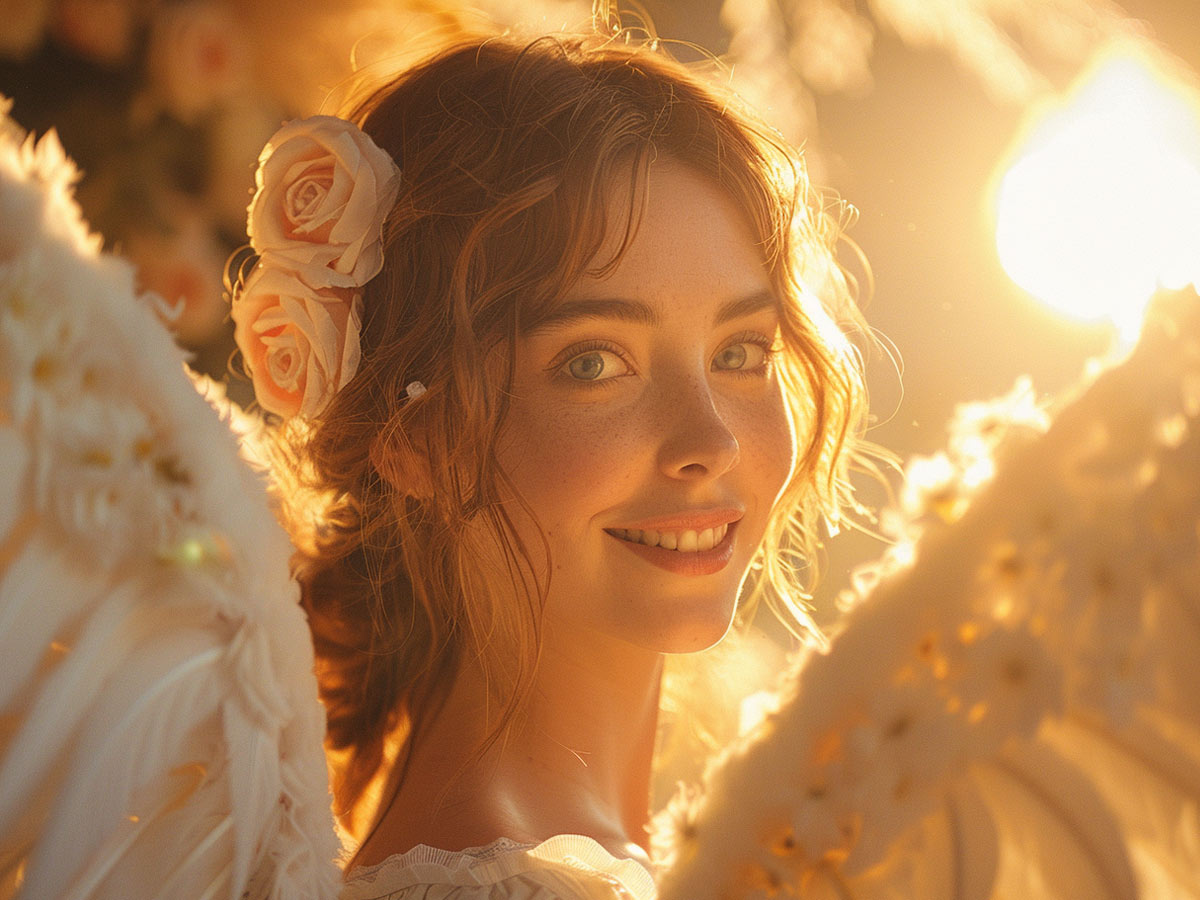
Sariel — meaning "God has commanded" — appears as "The Fallen Watcher" in the Apocrypha. The Book of Enoch portrays him as a Watcher who lusted after human women and taught them about the moon after descending to Earth; thus, he represents the overlap between knowledge and temptation.
He's not all bad, however, as he also appears as the angel who carried Adam and Eve down a mountain and explaining dreams to Jacob. Some portray him as a fallen angel with a darker, menacing appearance, but this A.I. depict him with a more regal bearing and androgynous appearance, reflecting his knowledge, power, and Aphrodite-esque romantic appeal.
The Archangel Gabriel

Gabriel has the distinction of being only one of two angels mentioned by name in the Bible. He makes an appearance in the Book of Daniel, but his most famous story happens in the Gospel of Luke when he appears to Mary and tells her she will give birth to Jesus.
Unfortunately for Gabriel, this AI-generated image is a bit short on details. Obviously, we're looking at an angel because he's got giant, white wings But other than that, who this is specifically is anyone's guess! We're not sure why the program went so shadowy for such a bright, celestial being.
King David
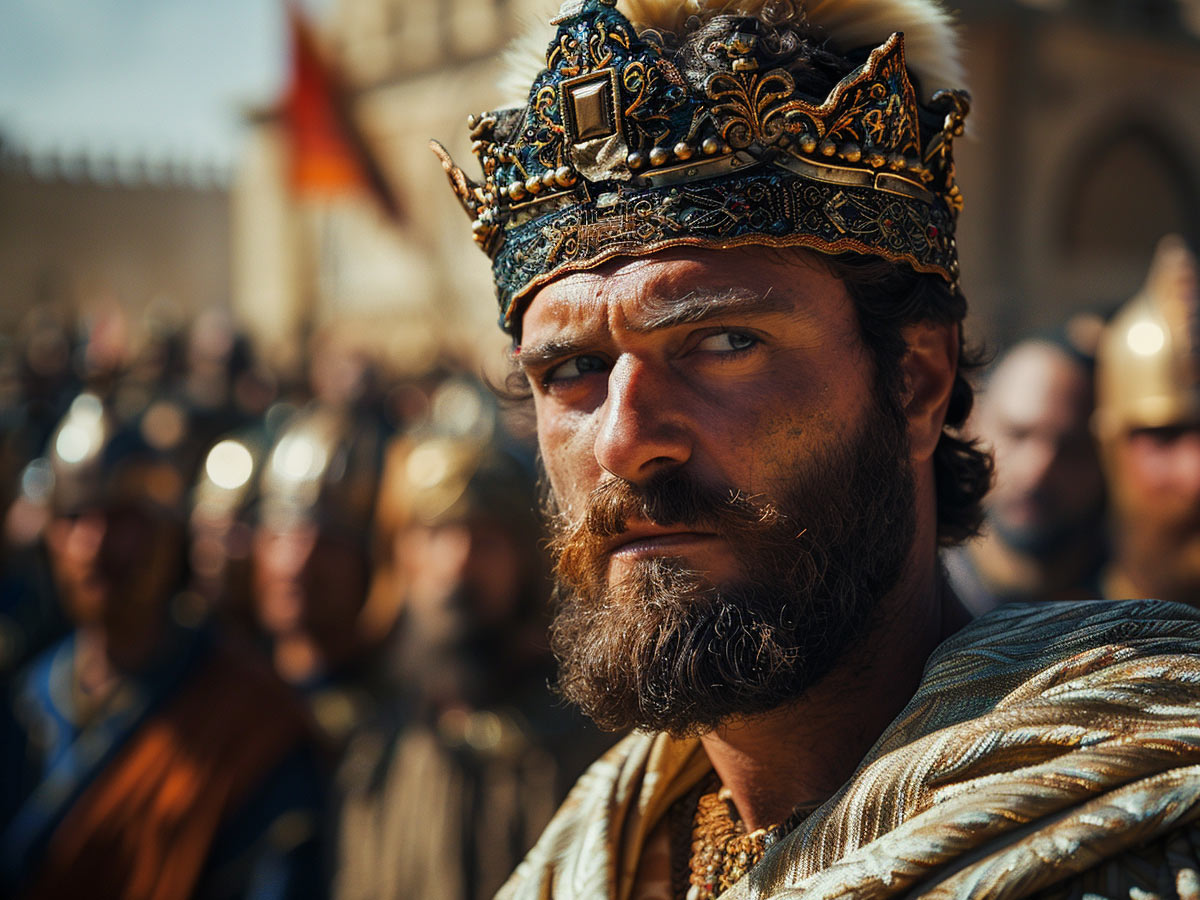
David is one of the most well-known kings of ancient Israel and is considered to be a major figure in the three Abrahamic religions—Judaism, Christianity, and Islam. The two biggest stories associated with him are his defeat of the giant Goliath as a boy and his adulterous affair with Bathsheba while he was king.
The AI program gave him a skeptical expression—we wonder what's just occured? He's obviously not the young boy who defeated Goliath. The crown says he's king, so maybe he's side-eyeing you-know-who.
Isaiah
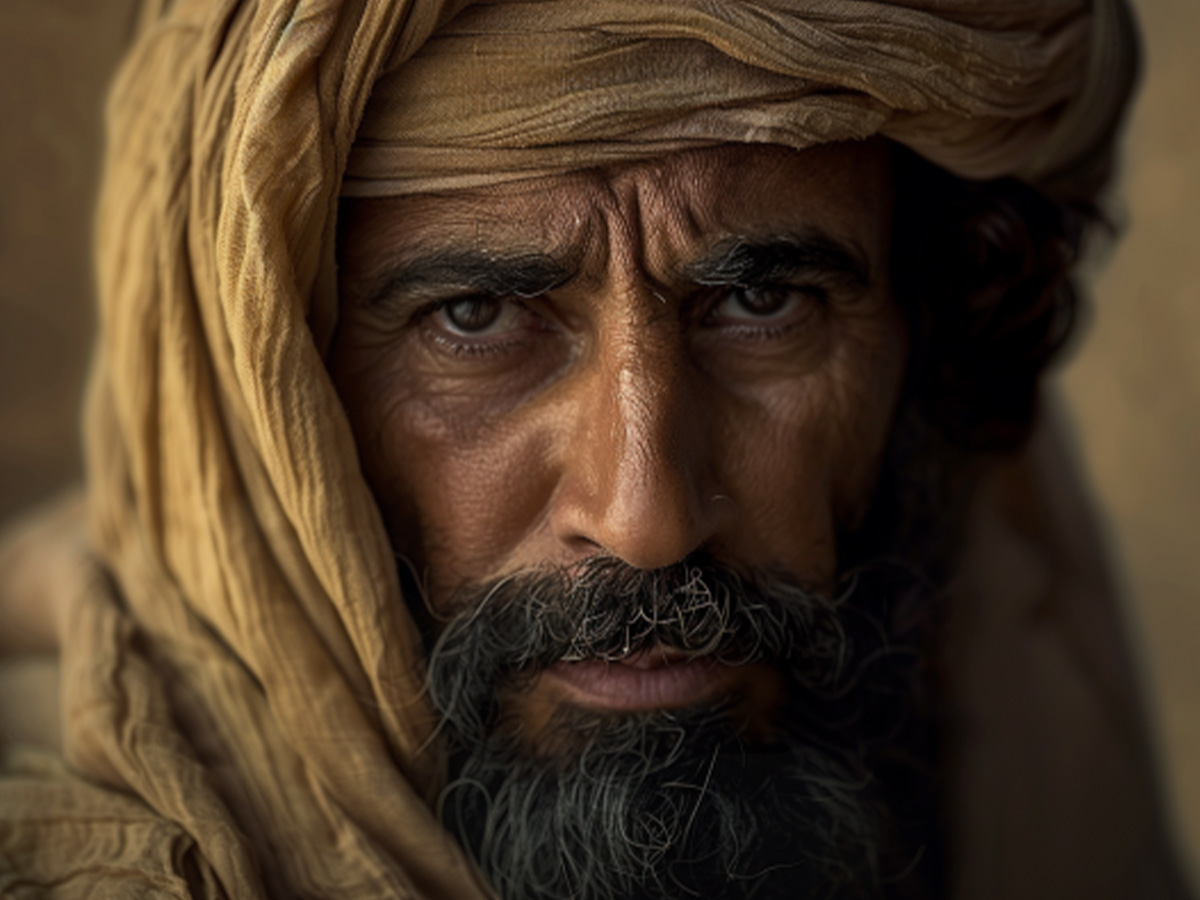
Isaiah was a prophet who lived in the kingdom of Judah around 700 BCE. Imagine a powerful speaker, kind of like an outspoken truth-teller, calling out for people to follow God's teachings. The Bible doesn't describe Isaiah's physical appearance, but we imagine he looks as wise as A.I. depicts him here.
Isaiah warned the Israelites about their wrongdoings and prophesied both judgment and hope for the future. He spoke of a coming Messiah, a savior figure, who would bring peace and justice.
Raphael

Unlike many Biblical angels who are shrouded in mystery, Raphael is briefly described in The Book of Tobit, which holds significance in some Catholic traditions. This archangel, known as a healer and protector, takes human form to guide a young man named Tobias on a journey. He's handsome, well-dressed, and hospitable.
Artistic interpretations often build upon this description, depicting Raphael with travel gear like a staff, a reminder of his role as Tobias' guide. In some cases, artists might add wings or a subtle glow to hint at his angelic nature. Here, A.I. totally thinks Raphael is some angelic prince!
Mary, the Mother of Jesus
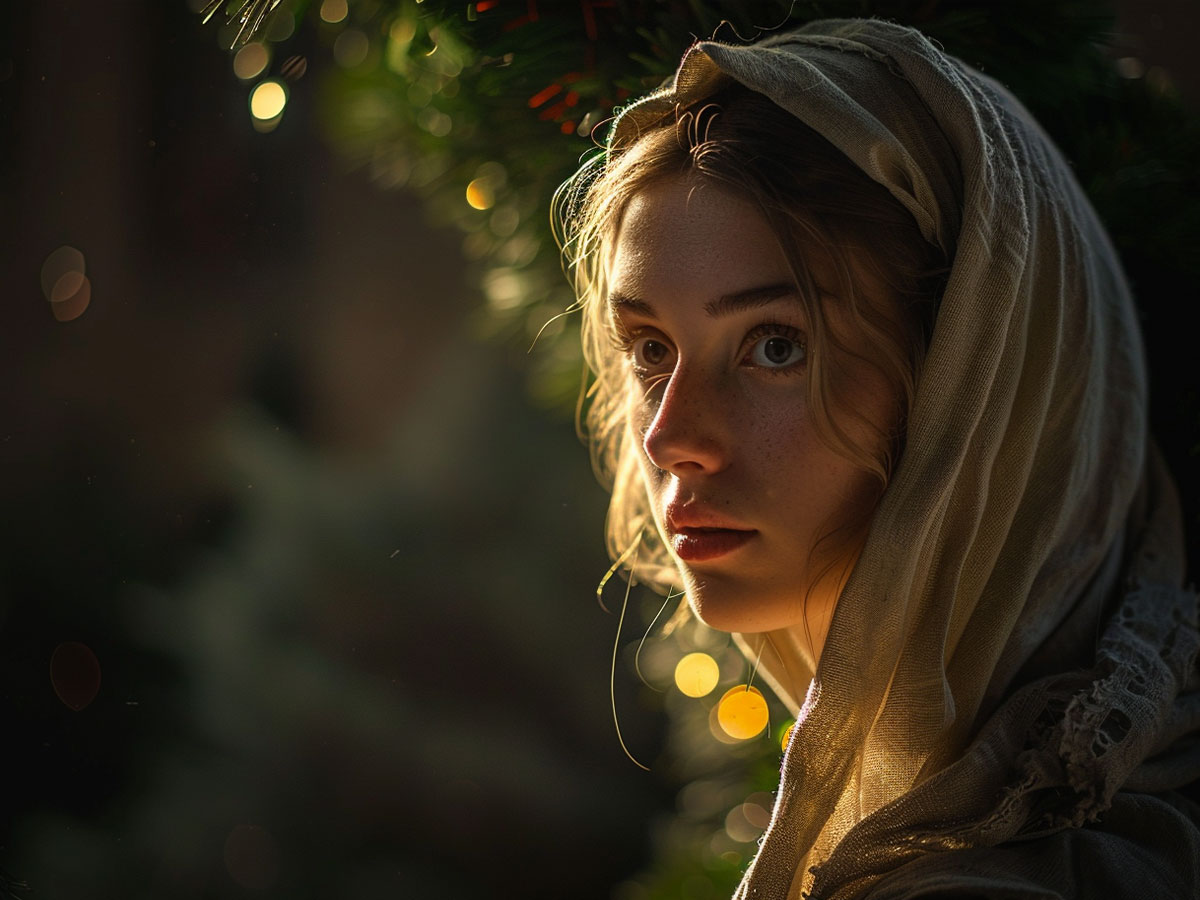
While Jesus is obviously the main focal point of Christianity, his mother, Mary, is another highly-regarded figure from the Gospels. According to the account in the Bible, Mary was visited by an angel who told her that she, a virgin, would give birth to the son of God.
This AI-generated image of Mary is probably one of the best we've seen. Obviously, no one knows what Mary would have actually looked like. In art, Mary is often depicted as wearing blue, which was at one point considered to be a color associated with royalty. We see no blue in this image, but it's still convincingly Mary-esque.
Uriel

The Protestant Bible doesn't mention Uriel. However, he does appear in the Apocrypha, which are books of the Bible not included in the official canon, though some sects of Christianity do consider them legit. They depict Uriel as an angel of wisdom and light, and his name in Hebrew literally means "God is my light."
Uriel is sometimes called an archangel, particularly in the apocryphal Books of Enoch, the Second Book of Esdras, and the Apocalypse of Moses. Descriptions of Uriel's appearance vary. He might be a cherub with fiery wings or a majestic figure carrying a book symbolizing knowledge, which could reference his role of guarding Eden after Adam and Eve's banishment.
Ezekiel
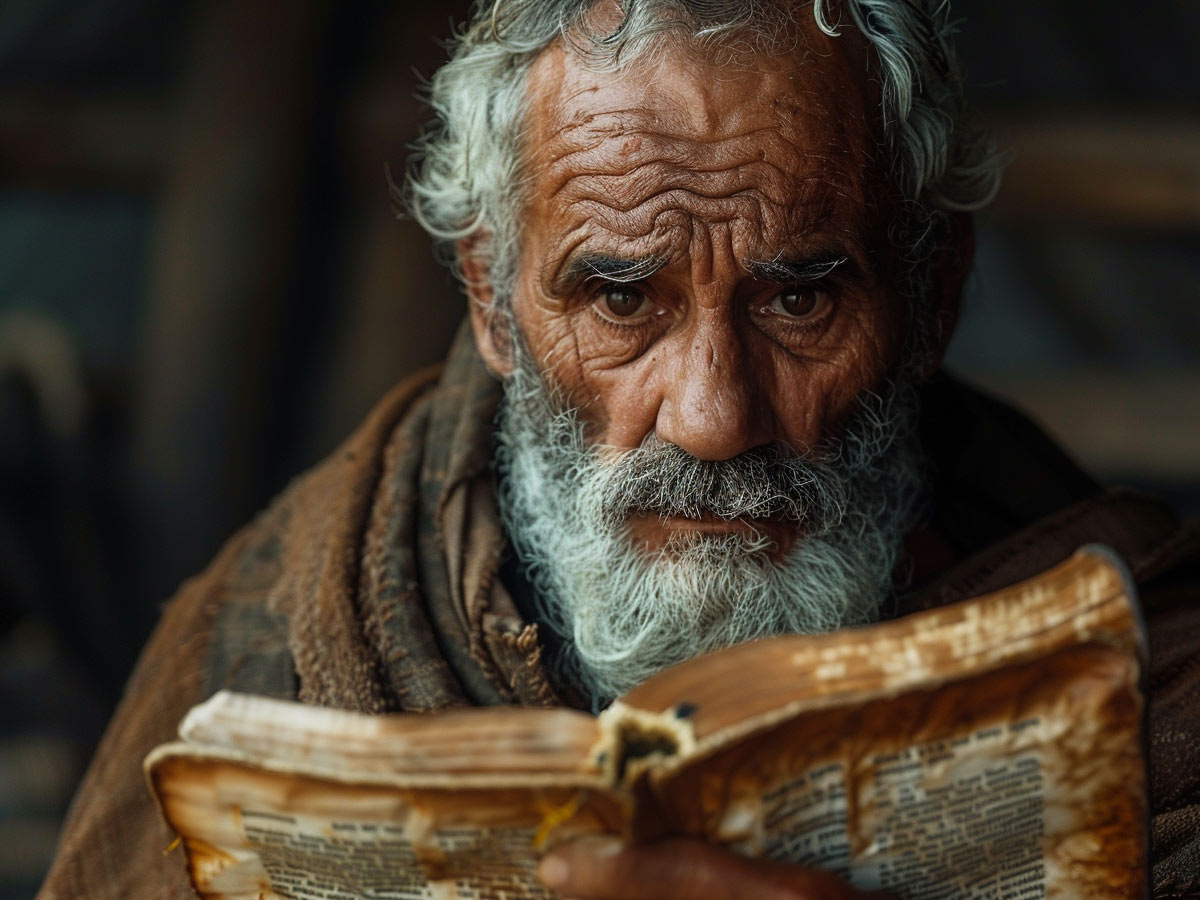
Ezekiel, whose name translates to "God strengthens" in Hebrew, is remembered thanks to the The Book of Ezekiel, which details his life and prophecies. Ezekiel was a priest taken captive to Babylon alongside King Jehoiachin around 597 BC. He delivered harsh warnings of judgement for the Israelites' disobedience and the destruction of Jerusalem.
However, his message also offered hope for restoration and a future return to the promised land. His strange visions attempt to capture the people's attention and convey the gravity of their situation, which is why he's often portrayed with vicious worry lines and a solemn appearance.
Jezebel
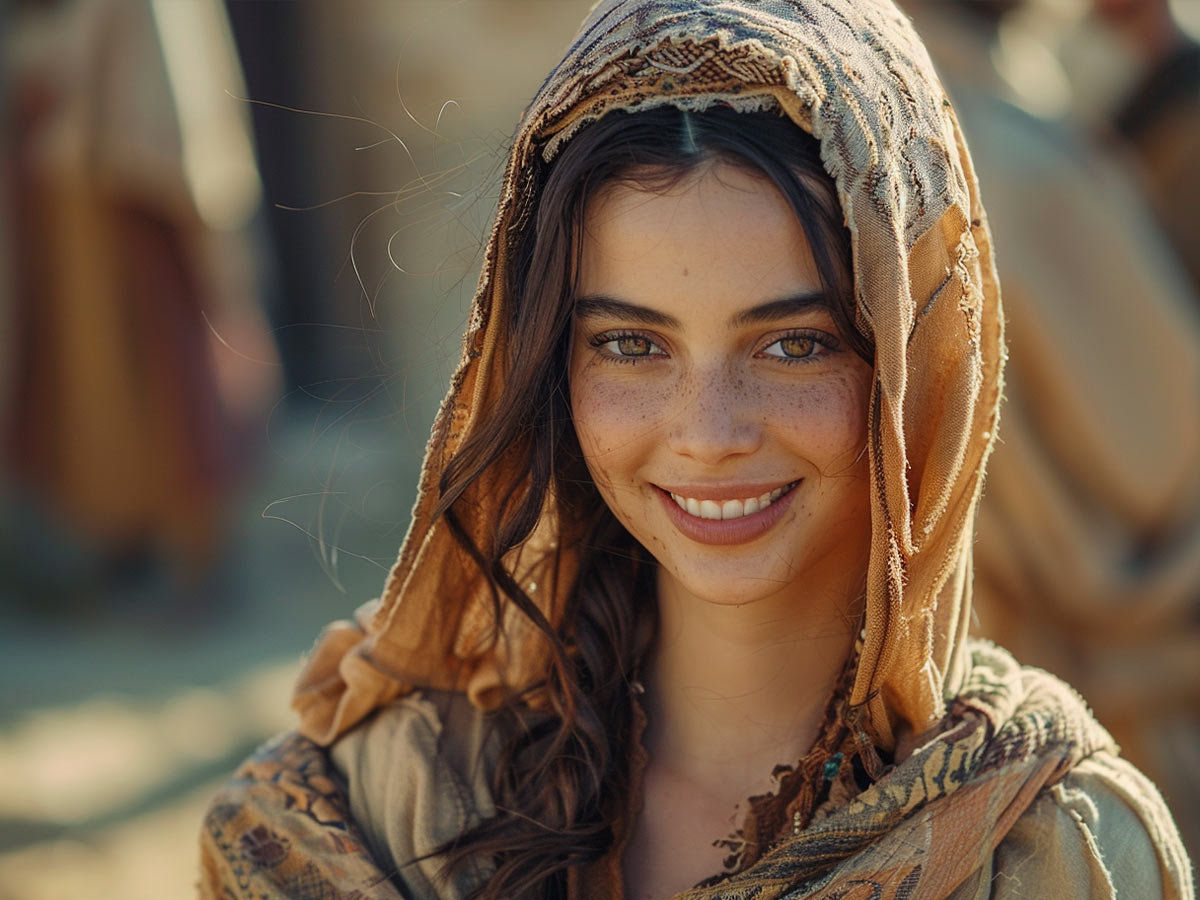
Jezebel is such an infamous character in the Bible that her name has come to be used as an insult against women thought to be deceitful or excessively promiscuous. She appears in the Book of Kings as the foreign wife of king Ahab. When she ties the knot, she brings the worship of Baal and Asherah into the kingdom of Israel and eventually gets tossed out of a window because of it.
Honestly, we're kind of disappointed with her depiction in this AI-generated image. She's such a larger-than-life personality that we were hoping for something a little more than just a sweet-looking girl. But, we suppose that's the point... Good looks to lure you away from God!
Jophiel

Jophiel (meaning "beauty of God" in Hebrew) is considered an archangel in some interpretations, but the Bible offers no clear archangel hierarchy. In the Apocryphal book The Revelation of Moses, Jophiel is portrays as the angel Dina who guards the Torah AKA the first five books of the Hebrew Bible.
Popular belief often depicts Jophiel as androgynous or female, wielding a flaming sword, which is a symbol of wisdom or perhaps reflecting a connection to the angel guarding the Garden of Eden in some interpretations. Jophiel is also associated with the color yellow, symbolizing creativity and enlightenment. Here, A.I. gave him gold nail polish!
Michael
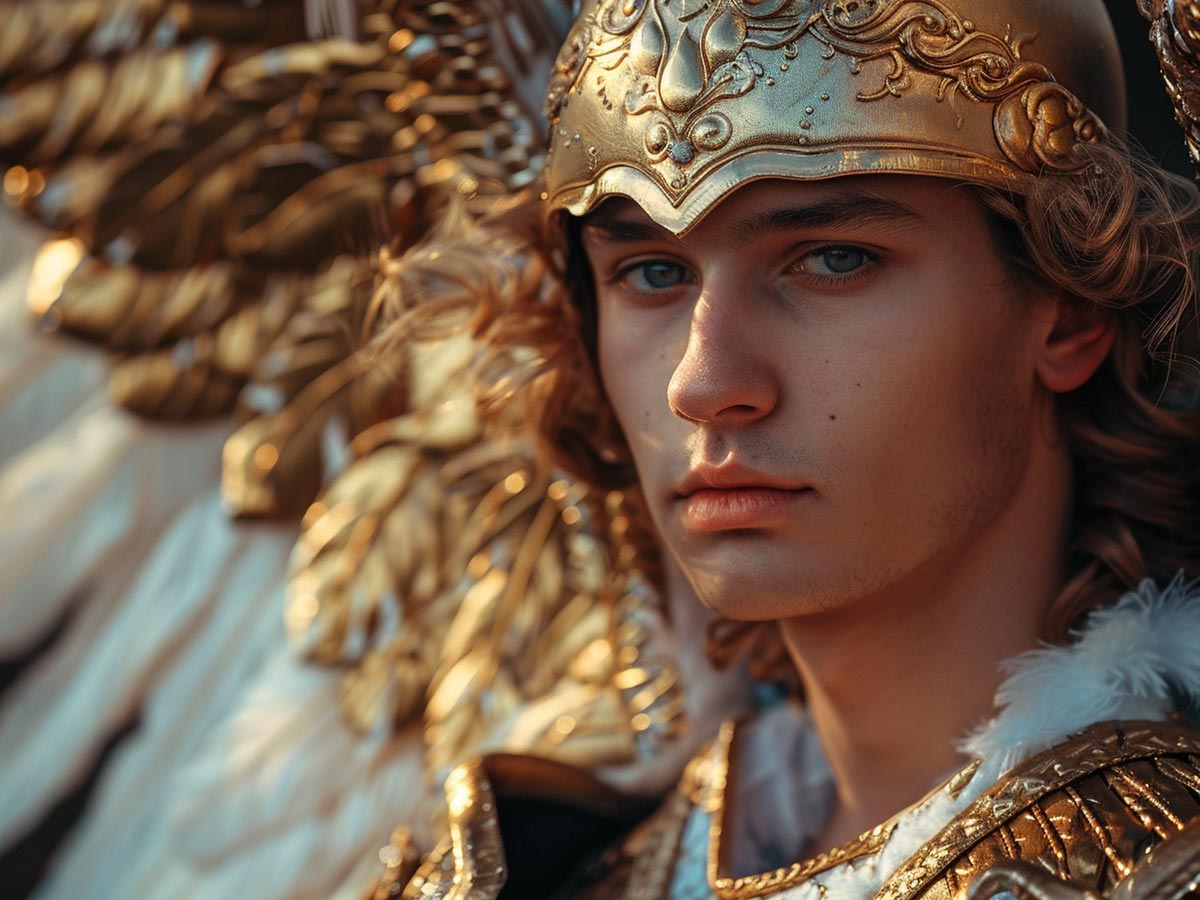
Michael is seen as a leader among angels, a warrior clad in armor who defends good against evil forces like Satan. Descriptions hint at a fearsome appearance and a booming voice. Paintings and sculptures depict him with large wings, radiating light, and sometimes even a handsome face.
However, these are artistic choices to depict Michael's heavenly nature and immense power. Biblically-accurate angels are fearsome creatures with multiple wings, hundreds of eyes, and the bodies of animals, and they radiate otherworldly light.
Metatron

Metatron is heavily associated with Jewish tradition and Apocryphal texts rather than the Biblical canon. He's linked with Enoch who ascended to heaven, which is where Metatron records humanity's deeds and Gods will as the official celestial scribe.
Jewish mystical texts, like the Kabbalah, further explore Metatron's role as an angel, often depicted as a mediator between God and humanity, a figure so close to the divine that his name reflects God's own ("YHWH"). No text mentions his appearance, but A.I. took the liberty of depicting him as a wise elderly man with sprawling wings.
Raziel

Raziel appears in the Apocrypha and Jewish texts. His name translates to "secrets of God," so he's historically associated with God's hidden knowledge. In the Zohar of the Kabbalah, he's the angel of secrets and mysteries who possesses the "Sefer Raziel," a celestial book containing all creation's secrets, both earthly and divine.
The Bible offers no description of Raziel. He might be a wise, scholarly figure holding a book or scroll, symbolizing his role as keeper of knowledge, but A.I. decided he is more tormented by his knowledge than glad to possess it, given the dark paint, wings, and clothes he wears.
Esther
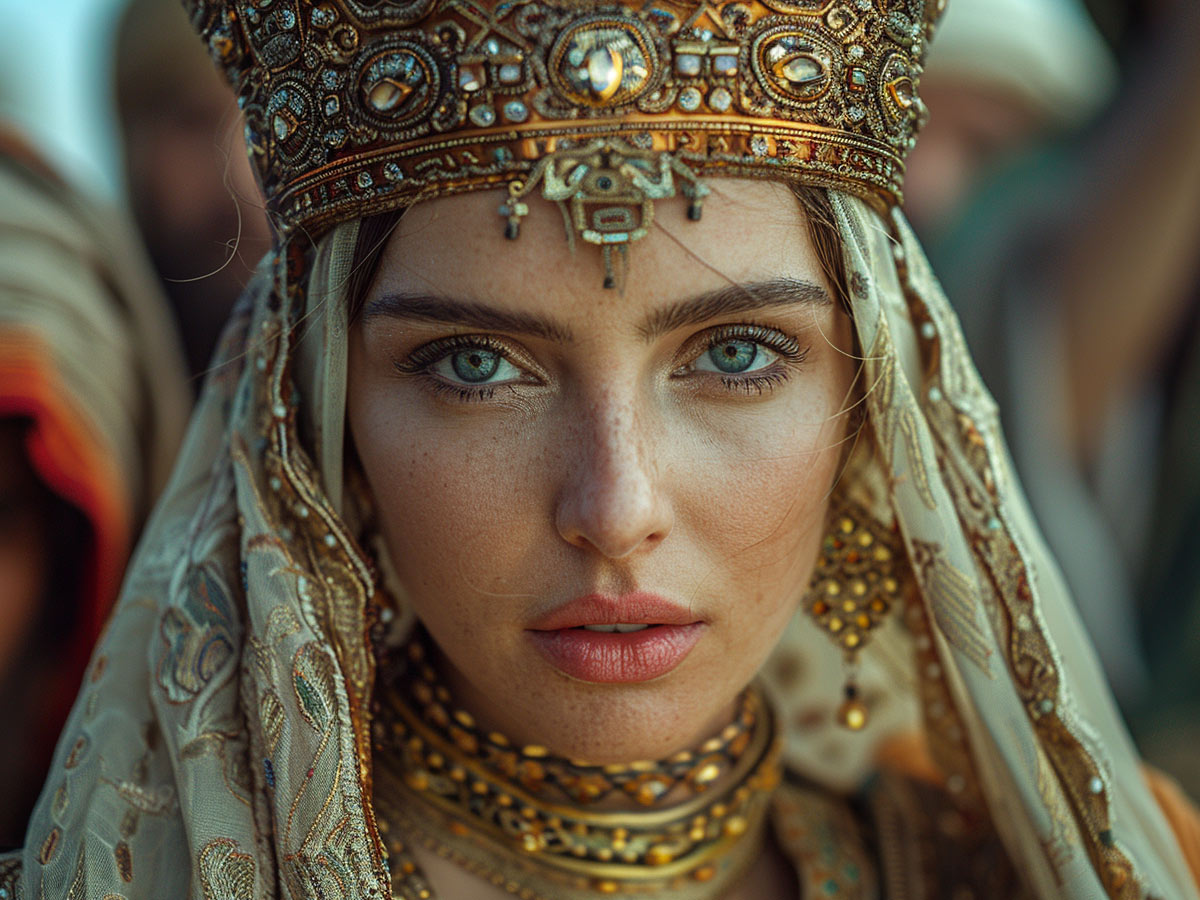
Esther is the much-beloved protagonist from the Book of Esther who rises from obscurity to save her people. Originally named Hadassah as a young Jewish orphan, she becomes Queen Esther after captivating the Persian King Ahasuerus and pleading with him to intervene in a plot to annihilate Jews in the Persian Empire.
While the Bible omits specific details on Esther's appearance, it's clear that she was naturally beautiful, which helped win the Kings's affection. Some portray her in royal attire, while others depict her during her emotional plea before the king.
Lucifer

Our familiar image of Lucifer as a beautiful angel who rebelled against God comes from later interpretations and literature, most famously John Milton's Paradise Lost. Artistic depictions based on this tradition often show Lucifer in two forms: before his fall, he's an angel blessed with stunning beauty. After his rebellion, he's transformed into a monstrous figure with horns, a tail, and a fearsome appearance.
Contrary to popular belief, the Bible doesn't depict Lucifer as a fallen angel. The name "Lucifer" appears only once in Isaiah, referring to a Babylonian king, not a heavenly being. The Bible does portray a figure who opposes God, but this figure is never referred to as Lucifer. The Bible itself focuses more on the relationship between God and humanity.
God

Obviously, there's no figure in the Bible more important than the big guy himself. God is a recurring theme in basically every Bible story, and yet we don't get many physical descriptions of him. In fact, there's one chilling passage in the Book of Exodus where Moses asks to see God, and he replies with, "You cannot see My face; for no man shall see Me, and live."
Because of this, the AI program had a lot of wiggle room and opportunity for creative liberties when depicting God. However, it went a surprisingly traditional route and depicted him as a bright light rising on the horizon. It's not the most groundbreaking image, but it is sufficiently generic and reverent enough that no one would probably throw a fit about it.
King Solomon

Solomon is forever linked to the books 1 Kings and 2 Chronicles in the Hebrew Bible, where he is renowned for his wisdom and horde of wives. He's even credited with the Book of Proverbs, which is filled with advice and spiritual enlightenment.
Solomon's crowning achievement was the construction of the First Temple in Jerusalem, a magnificent structure dedicated to God. Artists throughout history have depicted him in various ways, often as a regal figure adorned with rich garments, a golden crown, and a friendly, wise expression.
Adam and Eve
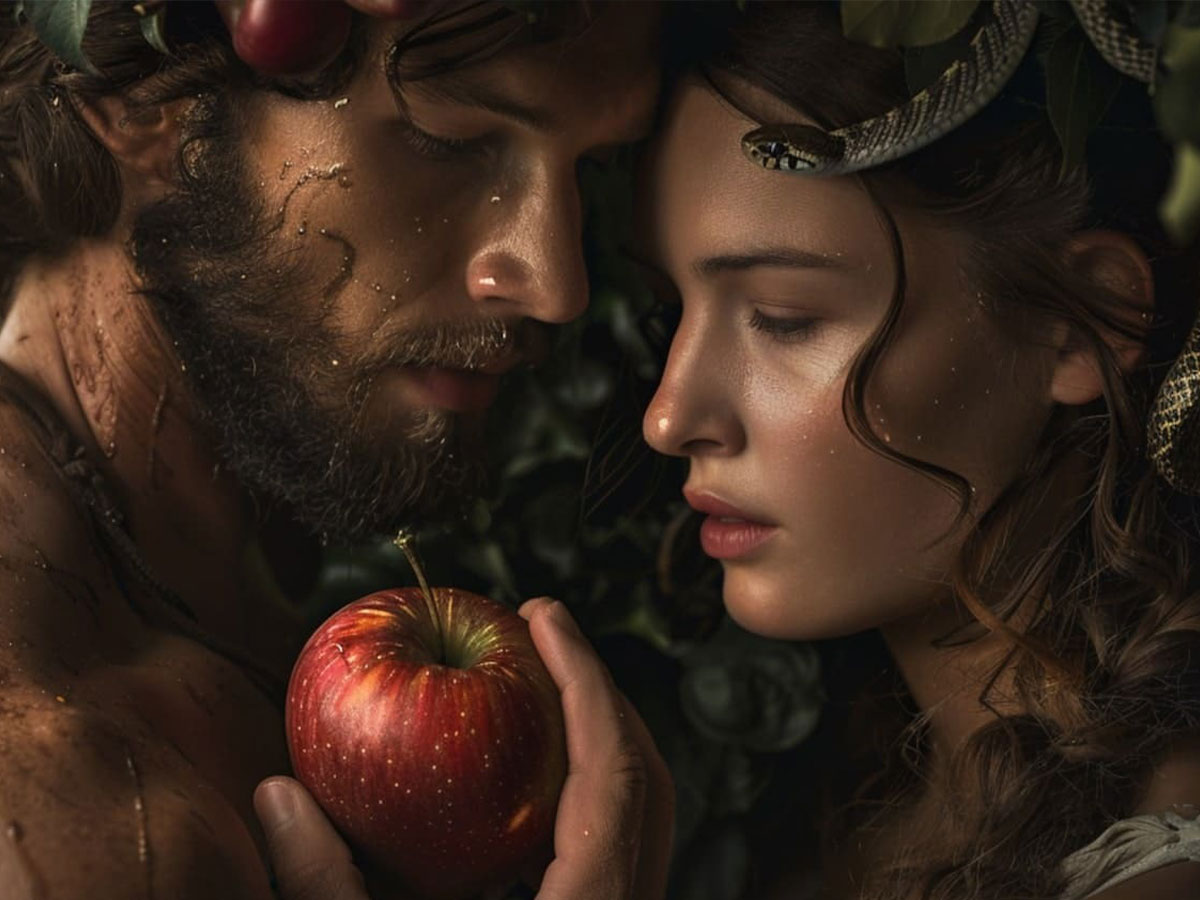
Adam and Eve were the first people to walk this earth, according to the Bible. So what did the first man and woman look like? Most portraits depict them as light-skinned, with an average build. Eve has long, flowing hair, while Adam has what we may consider an average-looking male hairstyle. Oh, and they're naked, of course.
AI thinks of these two figures as having darker skin than other portrayals, dark hair, and an average to slender build. Eve is not entirely sans-clothes, sporting a necklace—did she make it, or did Adam make it for her? Based on this analysis, I'd say we had some attractive ancestors!
Moses

Versions of Moses have been depicted for quite some time. From portraits to movies to animations to books, Moses is a popular figure! Considered the most important prophet in Judaism and one of the most important prophets in Christianity, Islam, and other faiths, he's known for the plagues in Egypt, parting the Red Sea, and receiving the Ten Commandments straight from God.
Usually seen as an old man with a long, gray beard and a kind of wild head of hair with an expression to match, the AI image shows us a similar take. Here, we see him with a long white beard, long white hair, and...are those blue eyes? Not sure how common that was.
Judas

If there's one villain from the Bible that almost everyone knows, it's Judas. This traitor was originally one of Jesus' twelve disciples, but he betrays his leader when he lets the Romans know where Jesus will be so that they can arrest and eventually crucify him. Judas eventually kills himself over his evil deed, and he is replaced as an apostle by Matthias in the Book of Acts.
Here, he is depicted with a troubled expression within a crowd of people...perhaps the other disciples? Maybe the AI program decided to go with the moment Jesus was taken away and Judas is left with the immediate aftermath. He looks regretful and not ready to face the people behind him.
Elijah

Elijah is one of the most important Israelite prophets in the Hebrew Bible and the Christian Old Testament; however, he's also one of the few that doesn't have a book named after him. His narratives take place in the Book of Kings, and he is one of only two people mentioned in the Bible to be assumed into Heaven before death.
The Second Book of Kings says: “As they continued walking and talking, a chariot of fire and horses of fire separated the two of them, and Elijah ascended in a whirlwind into heaven.” If this isn't one of the most metal ways to go, I don't know what is.
Lilith
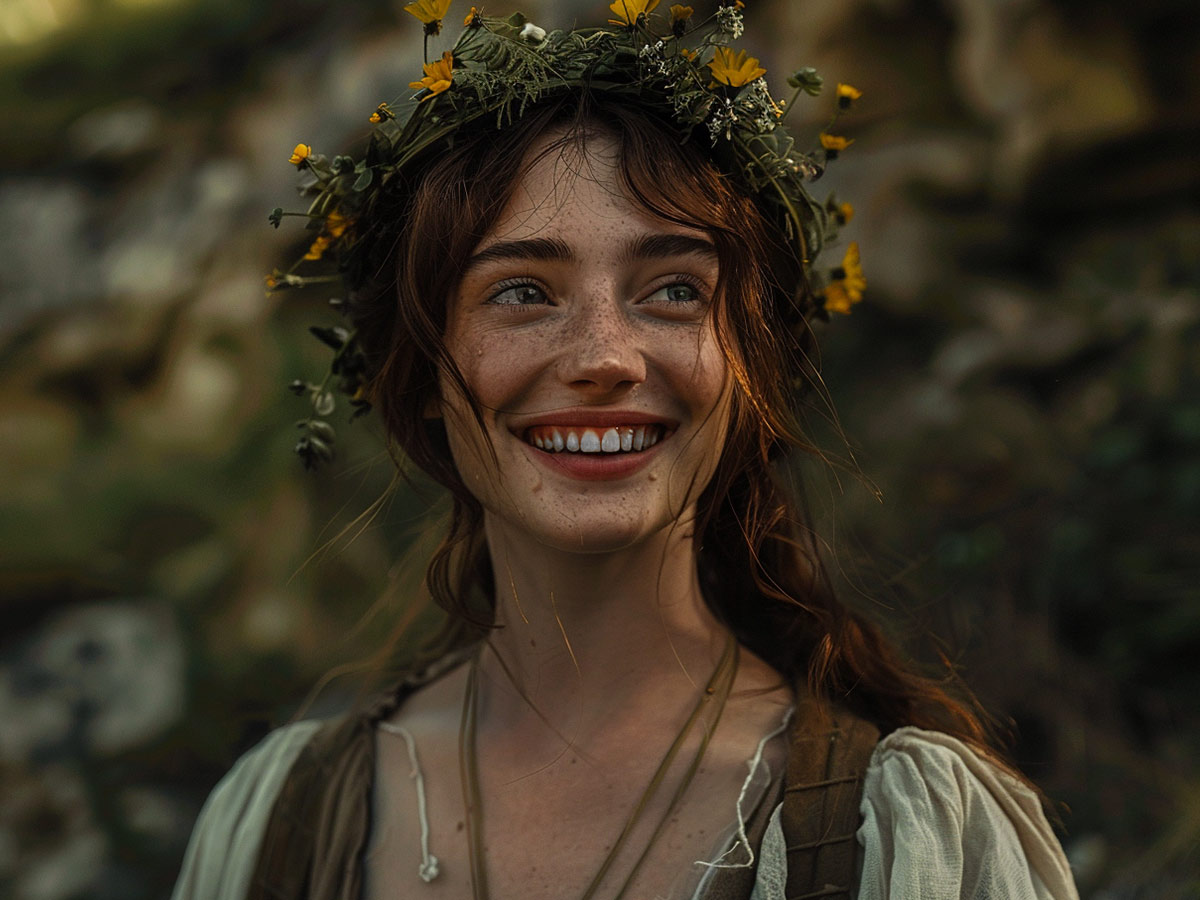
The Bible itself mentions Lilith only once, leaving much room for mystery and interpretation. Traditionally, she wasn't seen as a biblical figure except as "a creature dwelling in desolate places." However, Jewish folklore paints a different picture.
Lilith is claimed to be Adam's first wife before Eve. They clashed because she refused to be submissive. Lilith left Eden, becoming a powerful demon associated with the night and sometimes blamed for misfortunes. Depending on the story, Lilith can be monstrous with wings and a serpent's tail or a seductive beauty with flowing hair (obviously, A.I. thinks she's the latter). Today, some see Lilith as a feminist icon.
Jesus
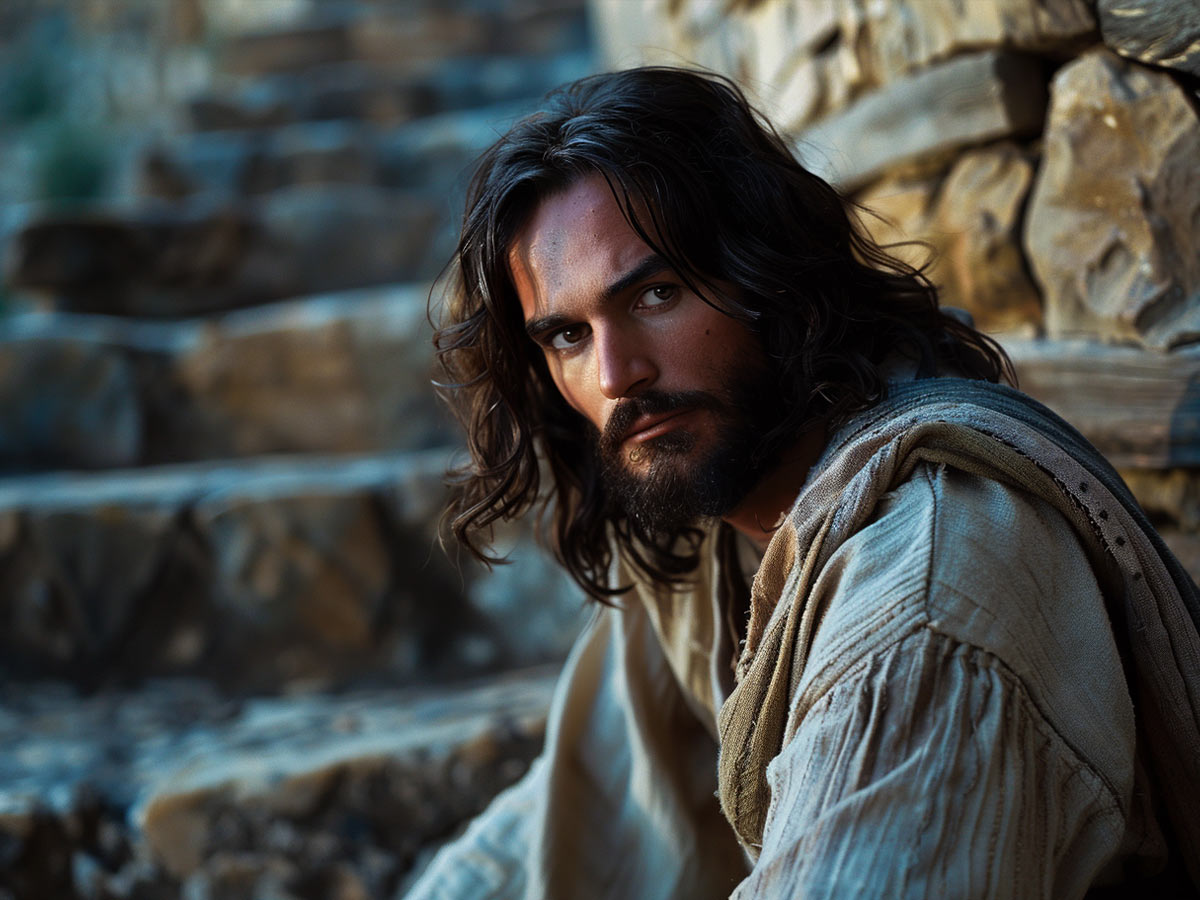
AI gave us a very different version than we expected —closer to what many versions portray him as. With lighter skin, but not white, and long, flowing dark hair and facial hair, this is probably the version many people today envision him as.
With a historical figure as prominent as Jesus, you would think we would have his description solidified a little more at this point—however, the fact that he lived so long ago and we only have so many descriptions to go off of, it can be hard to narrow his features down to incredibly accurate details. So, for now, we give you AI Jesus.
Job

The Bible tells the story of Job, a wealthy man known for his good character. Imagine a guy living a comfortable life with a big family and lots of possessions. That's Job! The Bible doesn't describe his physical appearance, so we can't say what he looked like, but A.I. did a decent job depicting a haggard, faithful old man.
Satan, a kind of challenger, convinces God to see if Job will stay faithful even if he loses everything. So, Job suffers a series of misfortunes, including losing his wealth, his children, and even his health. Ultimately, God rewards Job for his perseverance and restores his blessings.
Mary Magdelene
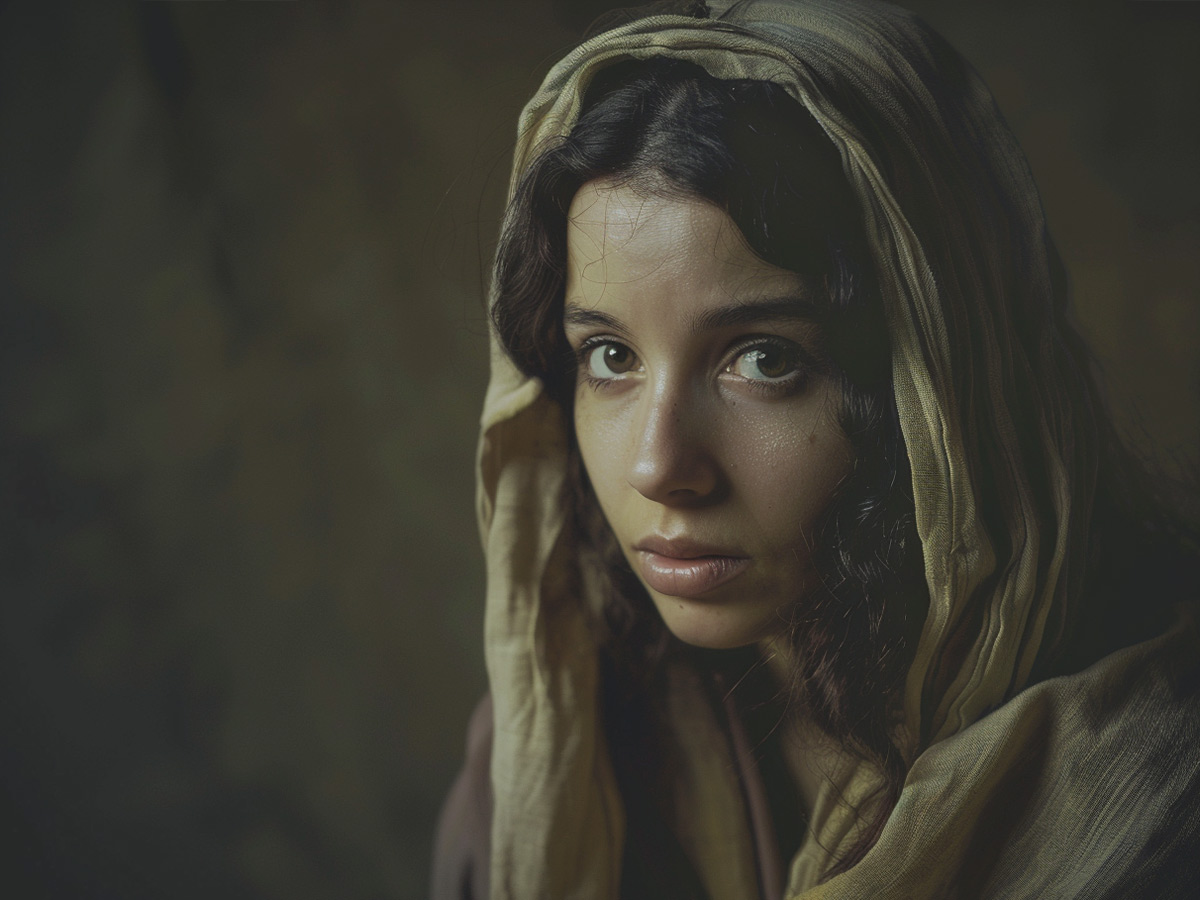
Mary Magdalene, sometimes called Mary of Magdala, was a woman who traveled with Jesus as one of his followers. She is one of the witnesses of his crucifixion and resurrection. She's mentioned by name more than most of the apostles and more than any other woman in the gospels besides Jesus's family.
Like much of the Bible, she's yet another Biblical figure that is shown as being fair-complected with long, red hair. The red hair is a Western portrayal meant to communicate sinful lustiness. But as you can see here, she is darker-complected—and though her hair is covered, you can see it's a dark brunette.
Peter the Apostle
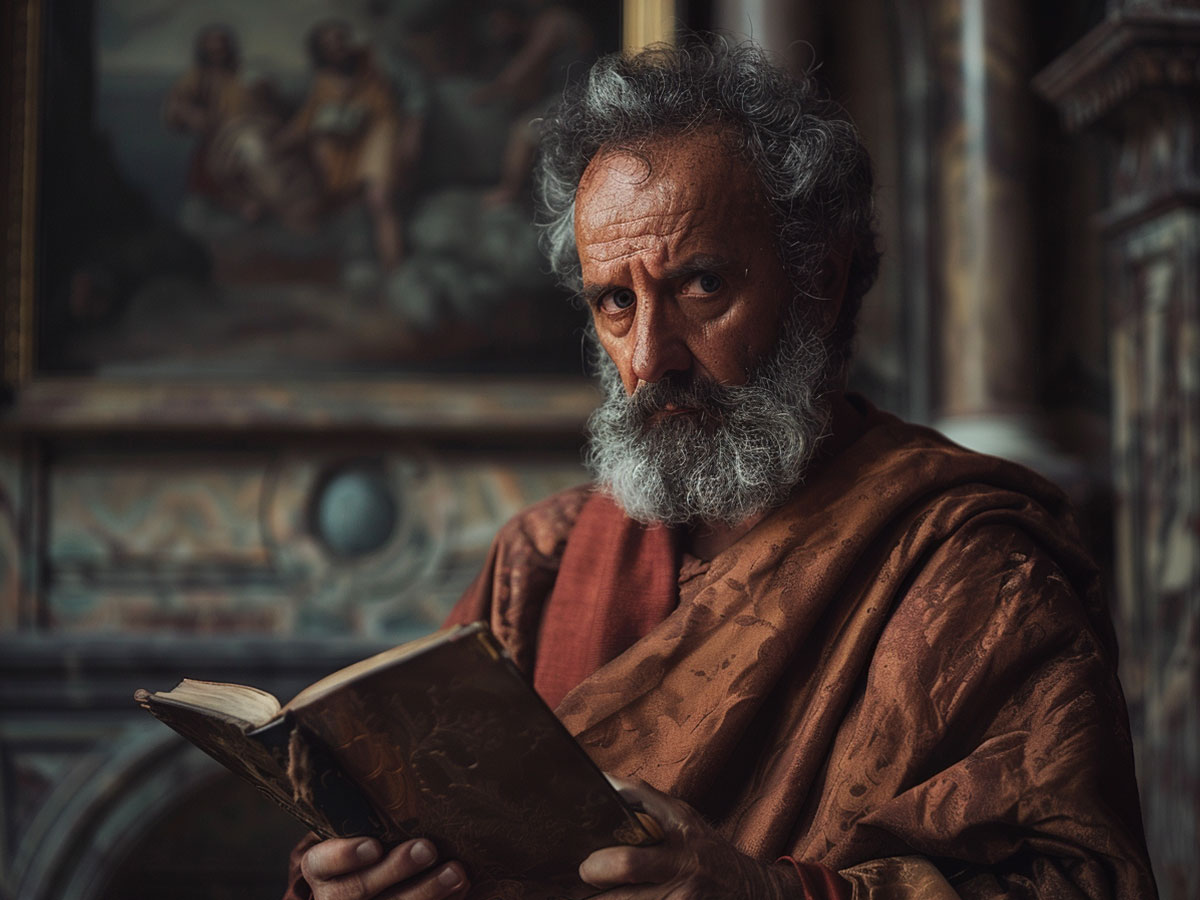
In the Gospels, Peter is one of Jesus' twelve disciples and often features frequently in the stories from these books. Unfortunately for Peter, his biggest claim to fame is denying Jesus on the night of his crucifixion after repeated assurances that he would do no such thing. Peter is also considered to be the first bishop of Rome, according to Catholic tradition specifically.
Considering that no one actually knows what Peter looked like (or if he existed at all), the AI program's guess is as good as anyone's! And we have to say that this image isn't half bad by AI standards—all of Peter's body parts are in the right place and are the right shape and size, which is not always something you can say about these photos!
Noah

Noah is a prominent figure in Judaism, Christianity, and Islam alike, and even outside of those religions, many people are familiar with his story found in the Bible. According to the Book of Genesis, Noah was commanded by God to build an ark in advance of a flood that would kill the rest of humanity.
Unfortunately, the AI really missed the mark with this one, at least if you want to stay true to the religious traditions associated with Noah. Sure, this guy looks like someone you might find in the Middle East. However, according to tradition, Noah lived to be 950 years old and built the ark at around 600. This guy is way too young to be centuries old!
Chamuel
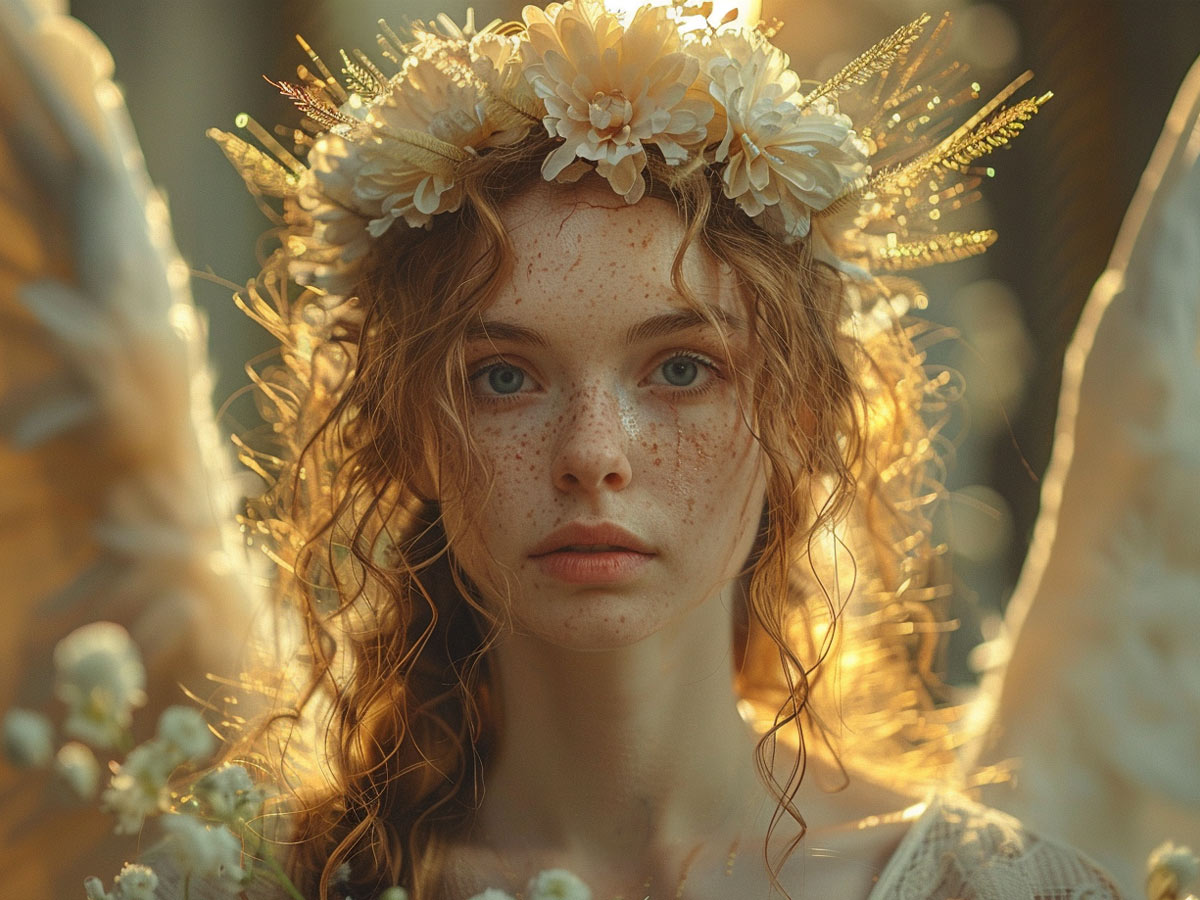
Chamuel appears primarily in the Apocrypha and sometimes in later religious interpretations of specific canon events, such as the angel who comforted Adam and Eve after their banishment from Eden, or as the angel who "strengthened" Jesus in the Garden of Gethsemane.
Chamuel's name translates to "one who seeks God" in Hebrew, which reflects his association with love, compassion, and finding peace in relationships. Sometimes he's depicted as a powerful, androgynous figure, or with a gentle, feminine presence. He might hold a flowers or a chalice, symbolizing divine love and peace.
Noah, Again
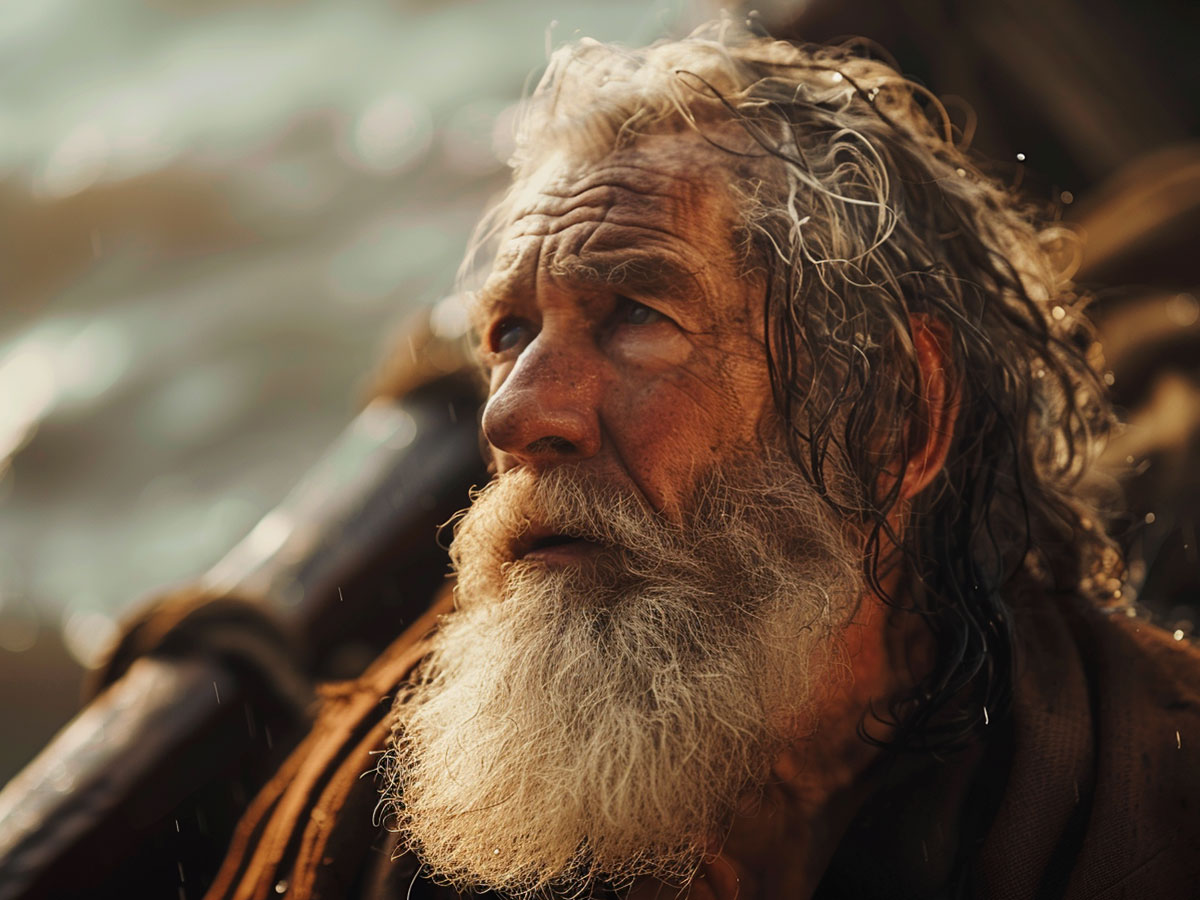
The AI program took another shot at depicting Noah, and this one seems to have got things a bit better. This guy is definitely much older-looking than the first, which is more in line with Noah. However, older as he may be, we're skeptical that even this guy has lived for hundreds of years.
Honestly, he looks kind of epic here. It looks like he's just emergining from the ark, taking in the first sunlight there's been in 40 days. He's tired and disheveled, but he's a survivor. AI has certainly done worse than this depiction of Noah!
Zadkiel

Zadkiel, the angel of mercy, is mentioned in the Apocrypha, and his name translates to "righteousness of God." Some Jewish traditions pinpoint Zadkiel as the "angel of the Lord" who stopped Abraham from sacrificing Isaac in Genesis 22. However, Christians often interpret this figure as God himself in angelic form.
Zadkie is known as an Angel of Mercy, often depicted holding a dagger to represent the thwarted sacrifice of Isaac, or holding a torch of divine light that guides people towards forgiveness and mercy. According to A.I., he seen pleading with God through prayer as rain pours down, symbolizing the washing away of sins.
Jesus, Again
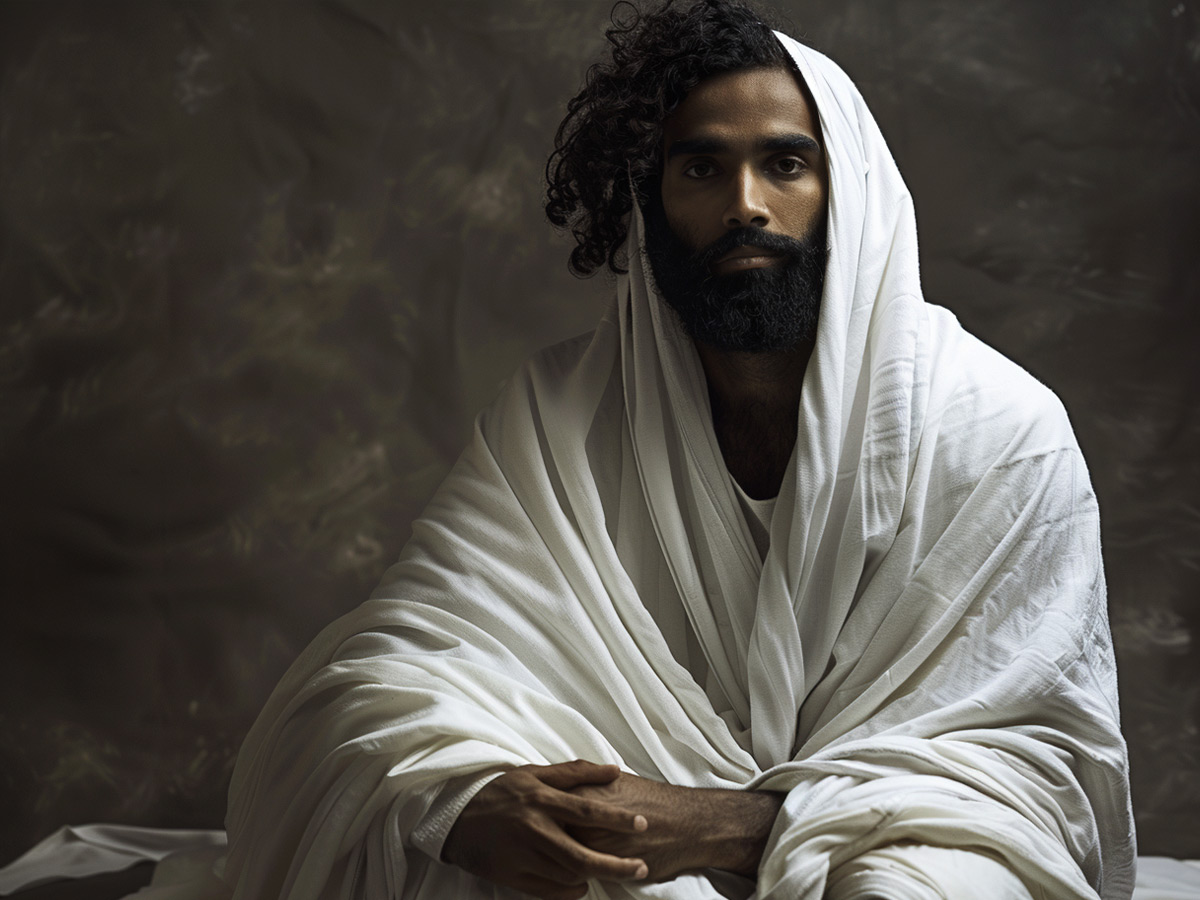
I know, probably not what you expected! Certainly not the face that's hanging up in churches or your grandma's house. But according to AI, Jesus probably looked more like this than your hippie neighbor.
I mean, it makes sense. For one, just think about where he was born. Do you really think he came out with pale, white skin? Also, this AI program was fed descriptions of Jesus taken from the Bible, so, who are we to argue with a non-biased technology? I give you, Jesus.
John the Apostle

John the Apostle AKA Saint John is present in the New Testament of the Bible and traditionally believed to have written the Gospel of John, and the Book of Revelation. He's one of Jesus' closest disciples, even referred to as "The Beloved Disciple." He's credited as a key witness of Jesus's mircales, ministry, crucifixion, and resurrection.
Popular portrayals depict him as a young man, sometimes beardless, reflecting descriptions of him as being the youngest of Jesus' disciples. Other depictions show him as an older man, perhaps reflecting how he is traditionally seen as the last surviving apostle who archived his visions of Revelation.
Abraham

Abraham is the common Hebrew patriarch of the Abrahamic religions, including Judaism, Christianity, and Islam. He's known for the depth of his faith and unquestioning obedience to God—even to the extent of sacrificing his son Isaac. Thankfully, he is not asked to sacrifice his son in the end, a ram is substituted.
Abraham is commonly depicted as an old man with a long white beard and long white hair to match. AI seems to think of him as an old man with white facial hair who likes to keep it trimmed up. Clothing-wise, AI and other portrayals are consistent—he is shown wearing robes and head coverings.
Gabriel, Again

The program took a second shot at depicting the archangel Gabriel and did a much better job this time around. In this image, we see her...?? with the classic halo that shows up in traditional Christian art when depicting Jesus, the saints, or an angel. So far, so good.
However, we're confused why the program decided to make Gabriel look so young and androgynous. When it comes to angels, you don't get many that are more important or powerful than Gabriel, so we always kind of imagined him as a buff dude. However, maybe it's a mistake to think of angels in human terms at all!
Paul the Apostle
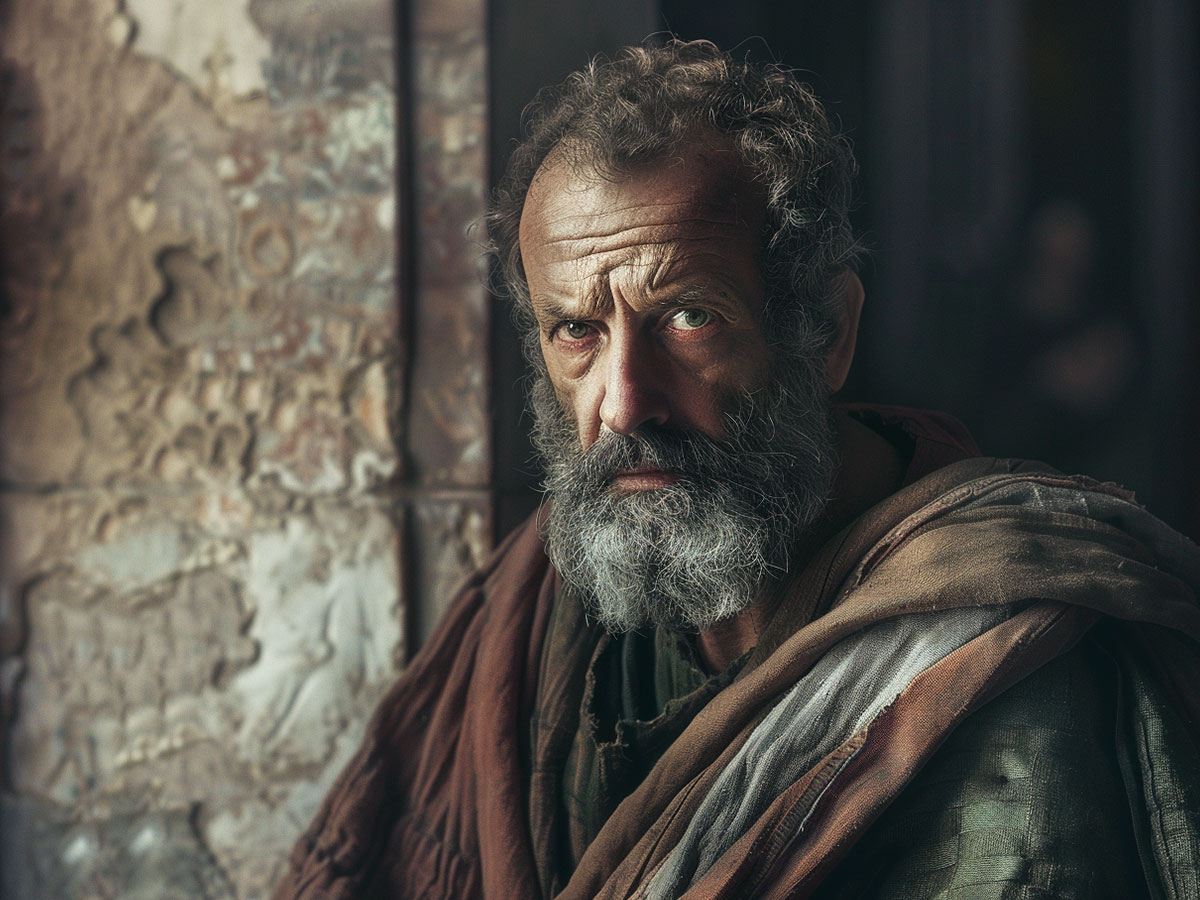
Paul the Apostle is one of the most important figures in early Christianity, and fourteen letters found in the New Testament are attributed to his authorship. According to the Book of Acts, before his miraculous conversion to Christianity, Paul was a pharisee known for his persecution of and violence towards Christians.
Considering that Paul is one of the biggest figures in his religion, this AI-generated image is a little underwhelming. He looks like your run-of-the-mill historical figures with nothing noteworthy about his appearance. The AI program could have at least given him a more exciting background. Oh well.
Jeremiah

Jeremiah is a fascinating Biblical figure known as the "Weeping Prophet." Imagine a young man, reluctant at first, but ultimately a courageous speaker for God. He does look awfully afraid in this picture! Living in Judah around 600 BCE, Jeremiah delivered some tough messages.
He warned the people about their disobedience and predicted the destruction of Jerusalem... Needless to say, he wasn't always popular. But he also offered messages of hope, promising that God would eventually restore his people. The Bible is filled with his heartfelt pleas and poetic expressions of faith.
John the Baptist

John the Baptist, a key figure paving the way for Jesus, was a prophet known for baptizing new followers of Christ in the Jordan River. A preacher living in the desert, calling for repentance and preparing people for the coming Messiah (Jesus).
living in the wilderness might have meant John had a long beard, dark skin, and a strong physique. Portrayals often show John with a serious or determined look, reflecting the urgency of his message. Here, he's depicted in a very Christ-like manner, clad in a crown of thorns, which points to the gospel.
Pontius Pilate
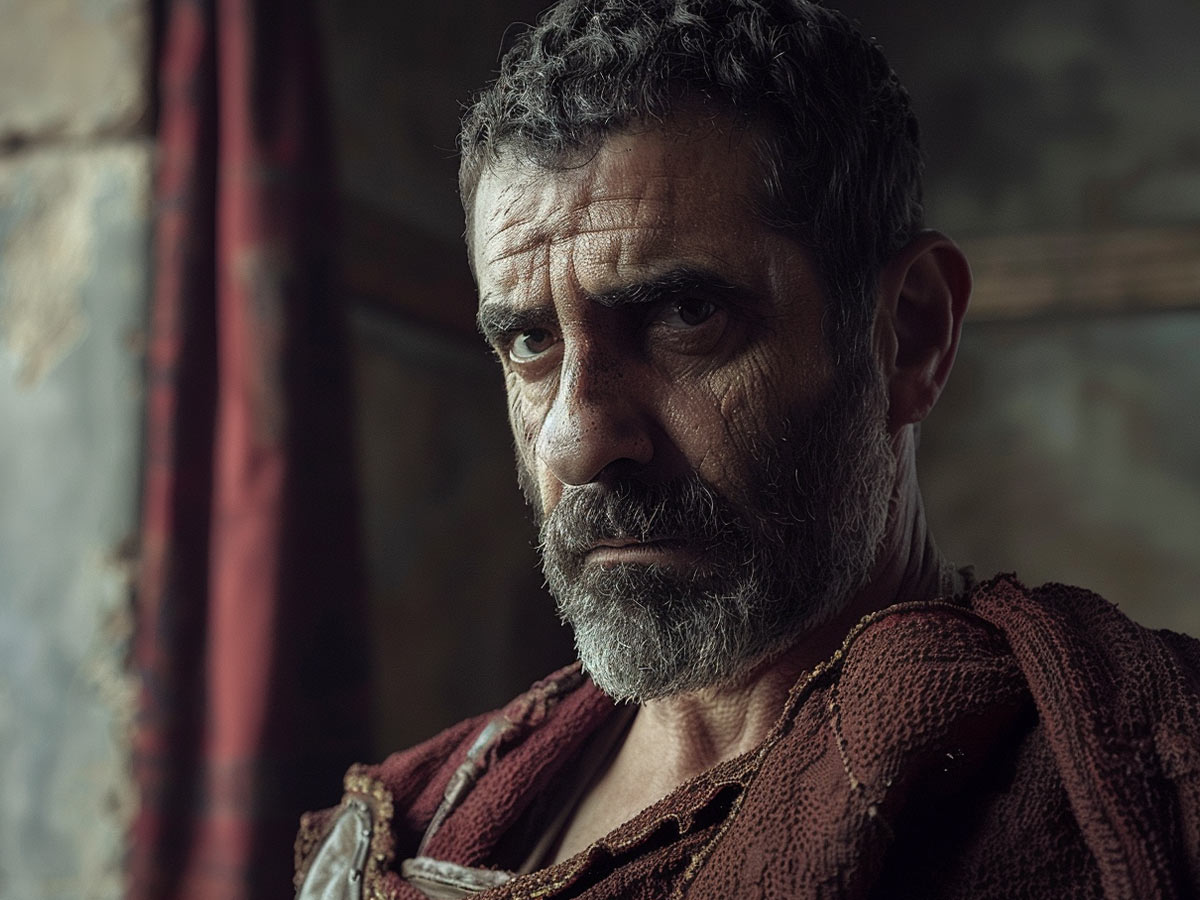
Pontius Pilate, forever linked to the trial and crucifixion of Jesus, was the Roman prefect of Judea from 26 to 36 AD. Descriptions of his physical appearance rely on historical context and artistic interpretations, and A.I. definitely took a few pointers from artists.
Pilate likely belonged to the upper class of Roman society, making him a well-dressed man with short dark hair and a beard. Some Roman governors had military experience. Pilate might have possessed a more muscular build, and sculptures portray Pilate as stoic, conflicted, or even remorseful.
Herod Antipas
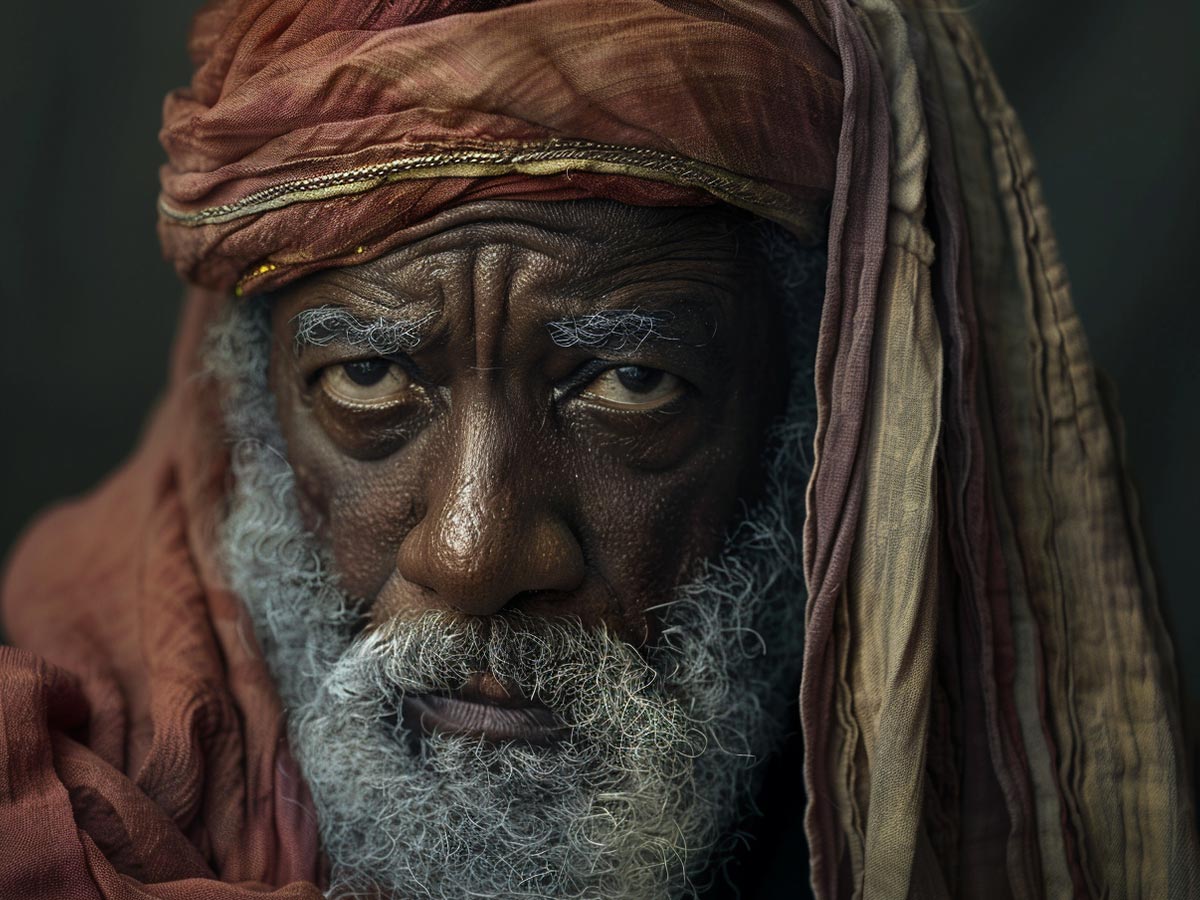
Herod Antipas, a name forever tied to the story of the infant Jesus, ruled a small territory in Judea as a tetrarch under Roman authority. History paints him as a ruthless king who, fearing a rival to his throne, ordered the massacre of children in Bethlehem after the visit of the Magi (as described in the Gospel of Matthew).
Imagine a man of Judean descent, possibly with dark hair and skin, adorned with jewels and dressed in fine clothes, reflecting his royal status. He might appear arrogant, paranoid, or even fearful, reflecting the weight of his decisions in the face of the momentous events surrounding Jesus' birth.
 Author
Sherrill Dean
Last Updated: November 17, 2025
Author
Sherrill Dean
Last Updated: November 17, 2025